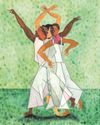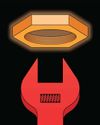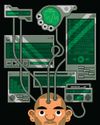
When the Supreme Court handed down its decision in Brown v. Board of Education, on May 17, 1954, it was big news. The Times gave the story banner headlines and ten pages of coverage. The case had been before the Justices since 1952, and it was common knowledge that a decision had been in the works. Many people probably anticipated the outcome, although maybe not that the opinion would be unanimous. Everyone, though, had the same question: Now what?
There is a reason for all the Hogwarts-like trappings that surround the Supreme Court—the super-secret conferences, the ban on cameras, the fact that the Justices read their opinions from a dais, that they never hold press conferences, that they wear black robes. All this gravitas masks the reality that the Court’s powers are largely paper powers. When the Court issues an opinion, it is basically waving a wand in the hope that something will happen. As Alexander Hamilton put it, the Court “has no influence over either the sword or the purse.” The sword belongs to the executive branch, as does the Department of Justice, and unless an Administration is prepared to enforce the Court’s decisions the Court is almost powerless to see that they are carried out.
Denne historien er fra August 07, 2023-utgaven av The New Yorker.
Start din 7-dagers gratis prøveperiode på Magzter GOLD for å få tilgang til tusenvis av utvalgte premiumhistorier og 9000+ magasiner og aviser.
Allerede abonnent ? Logg på
Denne historien er fra August 07, 2023-utgaven av The New Yorker.
Start din 7-dagers gratis prøveperiode på Magzter GOLD for å få tilgang til tusenvis av utvalgte premiumhistorier og 9000+ magasiner og aviser.
Allerede abonnent? Logg på

ART OF STONE
\"The Brutalist.\"

MOMMA MIA
Audra McDonald triumphs in \"Gypsy\" on Broadway.

INTERNATIONAL AFFAIRS
\"Black Doves,\" on Netflix.

NATURE STUDIES
Kyle Abraham's “Dear Lord, Make Me Beautiful.”

WHAT GOOD IS MORALITY?
Ask not just where it came from but what it does for us

THE SPOTIFY SYNDROME
What is the world's largest music-streaming platform really costing us?

THE LEPER - LEE CHANGDONG
. . . to survive, to hang on, waiting for the new world to dawn, what can you do but become a leper nobody in the world would deign to touch? - From \"Windy Evening,\" by Kim Seong-dong.

YOU WON'T GET FREE OF IT
Alice Munro's partner sexually abused her daughter. The harm ran through the work and the family.

TALK SENSE
How much sway does our language have over our thinking?

TO THE DETECTIVE INVESTIGATING MY MURDER
Dear Detective, I'm not dead, but a lot of people can't stand me. What I mean is that breathing is not an activity they want me to keep doing. What I mean is, they want to knock me off. My days are numbered.